Now We Are Seven
A little over seven years ago, John Mutter and I sat on my deck in the Seattle sunshine and laid out our plans for Shelf Awareness. We came back to one question again and again: "How can we help booksellers and publishers sell more books?"  At the time, when we first posed this question, we had no idea how much the industry was going to change. And it has been massive change: Borders collapsed, Amazon began publishing, newspaper book review sections dwindled, e-books grew, bookstores became referred to as "showrooms." Here at the Shelf, we often joke that one of the smartest things we did--unknowingly--was to choose a buddha as our mascot. During such turbulent times, what could feel better than to be assured by our buddha, Vik, that you will have all you need to know to go forth and be wise? (He has changed over time... to see him in our very first issue, click here.)
At the time, when we first posed this question, we had no idea how much the industry was going to change. And it has been massive change: Borders collapsed, Amazon began publishing, newspaper book review sections dwindled, e-books grew, bookstores became referred to as "showrooms." Here at the Shelf, we often joke that one of the smartest things we did--unknowingly--was to choose a buddha as our mascot. During such turbulent times, what could feel better than to be assured by our buddha, Vik, that you will have all you need to know to go forth and be wise? (He has changed over time... to see him in our very first issue, click here.)
Shelf Awareness Pro, as it's now known, went out for the first time seven years ago today to about 500 friends, family and colleagues. Today's issue will go to more than 30,000. We owe this success to you, our dear readers. Because you did for us what we all do in this industry every day, which is to say simply: "You've got to read this."
This simple phrase, "You've got to read this" has become increasingly one of the most important phrases in our industry. Throughout all the change, one constant has remained: Booksellers are the igniters of our industry. They are our secret weapon and can never be replaced by an algorithm. Knowing this, we looked for more and more ways to help booksellers and publishers sell more books. Our new goal became: How can we help with discoverability?
With that in mind, about a year ago, we launched our consumer newsletter, Shelf Awareness for Readers. It presents the 25 best books that have been published that week, all chosen by our league of 70-plus reviewers, all of whom have "street cred": they are booksellers, librarians, book bloggers, former publishers. We review the books we like. Let someone else do the snark and snobbery. We just want to get to the good ones.
The day we launched, I got a call from Chuck Robinson of Village Books in Bellingham, Wash., who, in his friendly and pointed way, asked, "Why can't I have SA for Readers to send out to our customers?" While this had always been in the plans, we simply couldn't stand the idea of letting one of our favorite people down. So we built it, knowing that whatever we put together for Chuck would have to be done in a scalable way so that everyone could have it.
Here's what it is: Shelf Awareness for Readers, co-branded with a store's logo, with the store's events calendar, and a buy button for each review that sends the reader directly to that store's website. You can see an example here. We give this to booksellers for free, and it is supported by our advertisers.
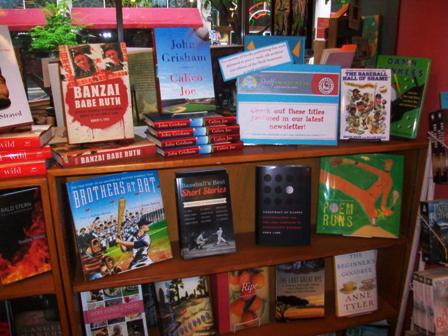 Along the way, we have honed and refined our program. We now send stores a list of the upcoming featured titles advance, so they can stock up. Many savvy stores have started doing displays of the titles. (Check out this terrific one from Malaprop's in Asheville, N.C.) We recently addressed a problem for some, which is that some ads in Shelf Awareness for Readers link to a publisher's title page, where there may be buy buttons for other retailers. We've just changed things so that ads can link to each individual store's info page for that title. We encourage our advertisers to take advantage of this, and so far, they are listening.
Along the way, we have honed and refined our program. We now send stores a list of the upcoming featured titles advance, so they can stock up. Many savvy stores have started doing displays of the titles. (Check out this terrific one from Malaprop's in Asheville, N.C.) We recently addressed a problem for some, which is that some ads in Shelf Awareness for Readers link to a publisher's title page, where there may be buy buttons for other retailers. We've just changed things so that ads can link to each individual store's info page for that title. We encourage our advertisers to take advantage of this, and so far, they are listening.
We have 38 stores now, with a total circulation for Shelf Awareness for Readers of more than 180,000. We believe these readers to be the best customers out there. They're in a different league from those who buy a few books a year on a website. Reading is a regular part of their lives, and they are the ones who are eager to hear about new books and who then say to their friends, "You've got to read this."
As the industry changes and we all try to do so much more with less, Shelf Awareness for Readers is our commitment to help stores and publishers improve discoverability. We know from many of our bookstore partners that the custom newsletter sells books for them. That's wonderful, but beyond that, our pie-in-sky, double secret hope is to change behavior: we want to help stores and publishers put the best books in front of the best readers and remind readers how important it is to buy those books from the place where they learned about the books. Our wish is that even in the wee small hours, when booksellers are getting much-deserved sleep, readers will be able to discover books and--even forgoing free shipping on paper towels elsewhere--then buy those books from an actual bookseller because they've recognized the importance of the people who say, "You have got to read this."
Every year in our anniversary issue, we praise our staff for their consistently herculean efforts. Once again, we thank them, but this year, we want to extend a special thank you to our bookstore partners. We are so honored that they've entrusted us with their customers and their good names. They are:
 To learn more about Shelf Awareness for Readers, click here. Please send birthday comments here.
To learn more about Shelf Awareness for Readers, click here. Please send birthday comments here.
John and I and the entire staff of the Shelf Awareness thank you all. Here's to many more years of having the pleasure of saying, "You've got to read this." --Jenn Risko








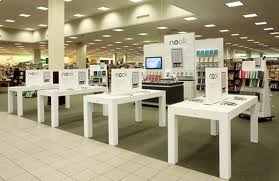 Barnes & Noble plans to launch
Barnes & Noble plans to launch 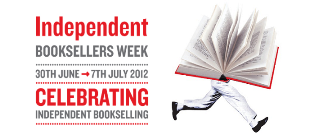 In anticipation of
In anticipation of  Amazon will provide financial backing for professional skateboarder and multiple X Games champion
Amazon will provide financial backing for professional skateboarder and multiple X Games champion 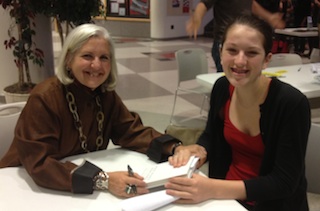
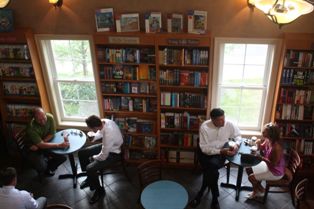 After seven years of being side by side, Creekside Books and Creekside Coffee, Skaneateles, N.Y., have united in the coffeehouse space, becoming
After seven years of being side by side, Creekside Books and Creekside Coffee, Skaneateles, N.Y., have united in the coffeehouse space, becoming  This is the first Detective Brenner title available in English. The seven Detective Brenner titles have each sold more than 300,000 copies and three of them have been made into films.
This is the first Detective Brenner title available in English. The seven Detective Brenner titles have each sold more than 300,000 copies and three of them have been made into films.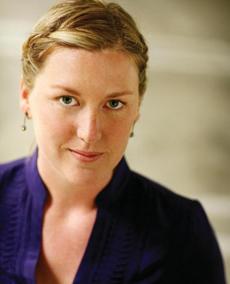 Maggie Shipstead grew up in Orange County, Calif. She is a graduate of the Iowa Writers' Workshop, a former Wallace Stegner Fellow at Stanford and a recent resident at the Cité Internationale des Arts in Paris. Her short fiction has appeared in many publications, including Tin House, VQR, American Short Fiction and The Best American Short Stories, and her story "La Moretta" was a 2012 National Magazine Award finalist. She doesn't really know where she lives but is open to suggestions. Her first novel, Seating Arrangements, was published by Knopf on June 12, 2012.
Maggie Shipstead grew up in Orange County, Calif. She is a graduate of the Iowa Writers' Workshop, a former Wallace Stegner Fellow at Stanford and a recent resident at the Cité Internationale des Arts in Paris. Her short fiction has appeared in many publications, including Tin House, VQR, American Short Fiction and The Best American Short Stories, and her story "La Moretta" was a 2012 National Magazine Award finalist. She doesn't really know where she lives but is open to suggestions. Her first novel, Seating Arrangements, was published by Knopf on June 12, 2012.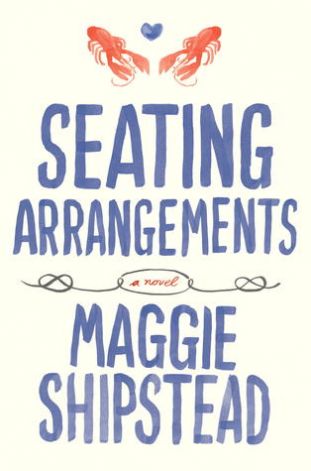 Book you've bought for the cover:
Book you've bought for the cover: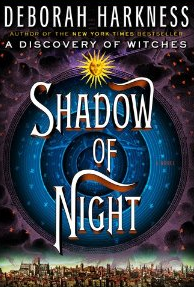 When
When 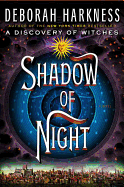
 I hear fictional voices. The final days of Audiobook Month seem an appropriate time to explore this issue.
I hear fictional voices. The final days of Audiobook Month seem an appropriate time to explore this issue.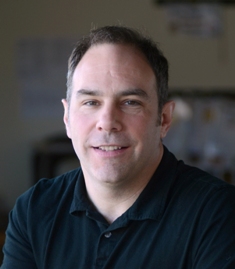 Matthew Dicks (whose previous novels include Something Missing and Unexpectedly, Milo), credits his 14 years as an elementary school teacher and working with special needs students like Max for serving him well when he wrote Memoirs of an Imaginary Friend: "In particular, I think I am keenly aware of the kinds of things that children worry about on a daily basis, and I was able to exploit this awareness when writing about Max and his peers. I've probably developed a well-tuned ear for children's dialogue as well, though if this is the case, it was achieved through osmosis rather than purposeful effort."
Matthew Dicks (whose previous novels include Something Missing and Unexpectedly, Milo), credits his 14 years as an elementary school teacher and working with special needs students like Max for serving him well when he wrote Memoirs of an Imaginary Friend: "In particular, I think I am keenly aware of the kinds of things that children worry about on a daily basis, and I was able to exploit this awareness when writing about Max and his peers. I've probably developed a well-tuned ear for children's dialogue as well, though if this is the case, it was achieved through osmosis rather than purposeful effort."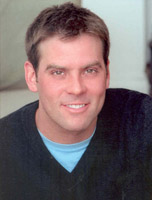 As Brown prepared to record Memoirs of an Imaginary Friend, he found Max's voice the more challenging one initially, describing him as "a very unique character and a very special one. I have never done a character like him. He has so many intense emotions and a very strong will. Yet, he is very fragile. He has a hard time communicating with others. So when I saw all these intense forces acting and counteracting with each other. I felt that they might come out in a slightly flat or distant way. But the intensity is always behind it. Add the fact he's young, maybe a little younger sounding than boys his age, and that was the intent I had behind his voice. Many things get tried at the beginning of the recording process but it becomes pretty obvious and organic as you go."
As Brown prepared to record Memoirs of an Imaginary Friend, he found Max's voice the more challenging one initially, describing him as "a very unique character and a very special one. I have never done a character like him. He has so many intense emotions and a very strong will. Yet, he is very fragile. He has a hard time communicating with others. So when I saw all these intense forces acting and counteracting with each other. I felt that they might come out in a slightly flat or distant way. But the intensity is always behind it. Add the fact he's young, maybe a little younger sounding than boys his age, and that was the intent I had behind his voice. Many things get tried at the beginning of the recording process but it becomes pretty obvious and organic as you go."